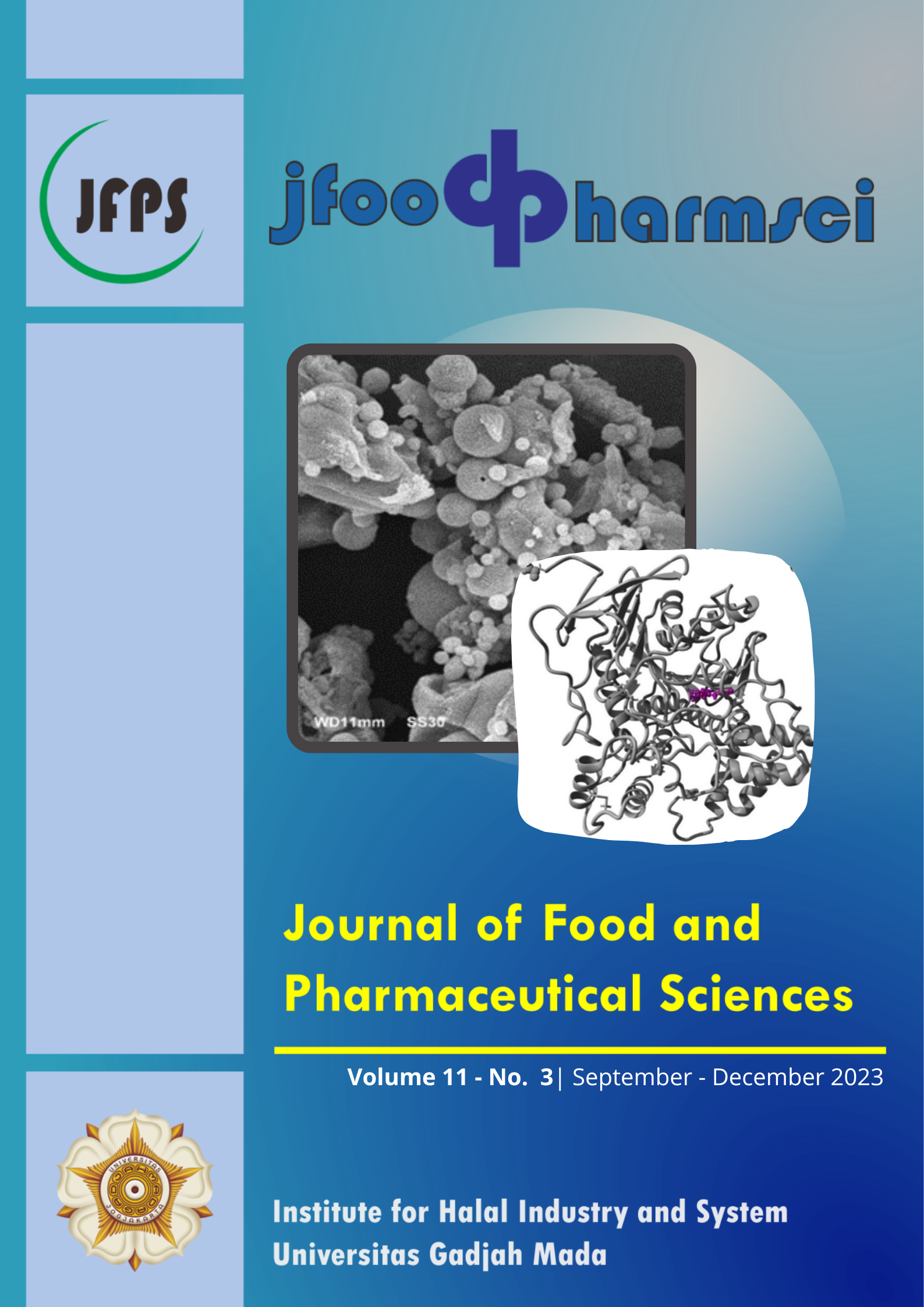The Development of Alternative Dosage Form for Creatine Monohydrate: A Floating Tablet
Abstract
Creatine monohydrate has been developed as a neuroprotective agent and can penetrate in vitro model of the blood-brain barrier. However, its delivery is hampered by its limited capacity of creatine transporter. The floating system is known to increase the residence time of drugs in the stomach; thus, the active substances can be absorbed more optimally. Therefore, this study is aimed to develop creatine monohydrate floating tablets by optimizing the proportion of HPMC K100M and NaHCO2 and evaluating the quality of floating tablets. The formula was designed Simplex Lattice Design method. Tablets were prepared by the wet granulation method and evaluated for granule and tablet parameters. The results showed that HPMC K100M significantly increased flow time, absorption rate, hardness, floating time, swelling index; decreased index tap, fragility, and floating lag time. Meanwhile, an increase in NaHCO2 significantly affects an increase in floating lag time. The optimum formula obtained was 18.87% HPMC K100M and 21.12% NaHCO2. Verification of the optimum formula showed that tablet parameters were not significantly different from the predicted formula. The studies suggest that this prototype can be developed to increase creatine residence time in the stomach.
































